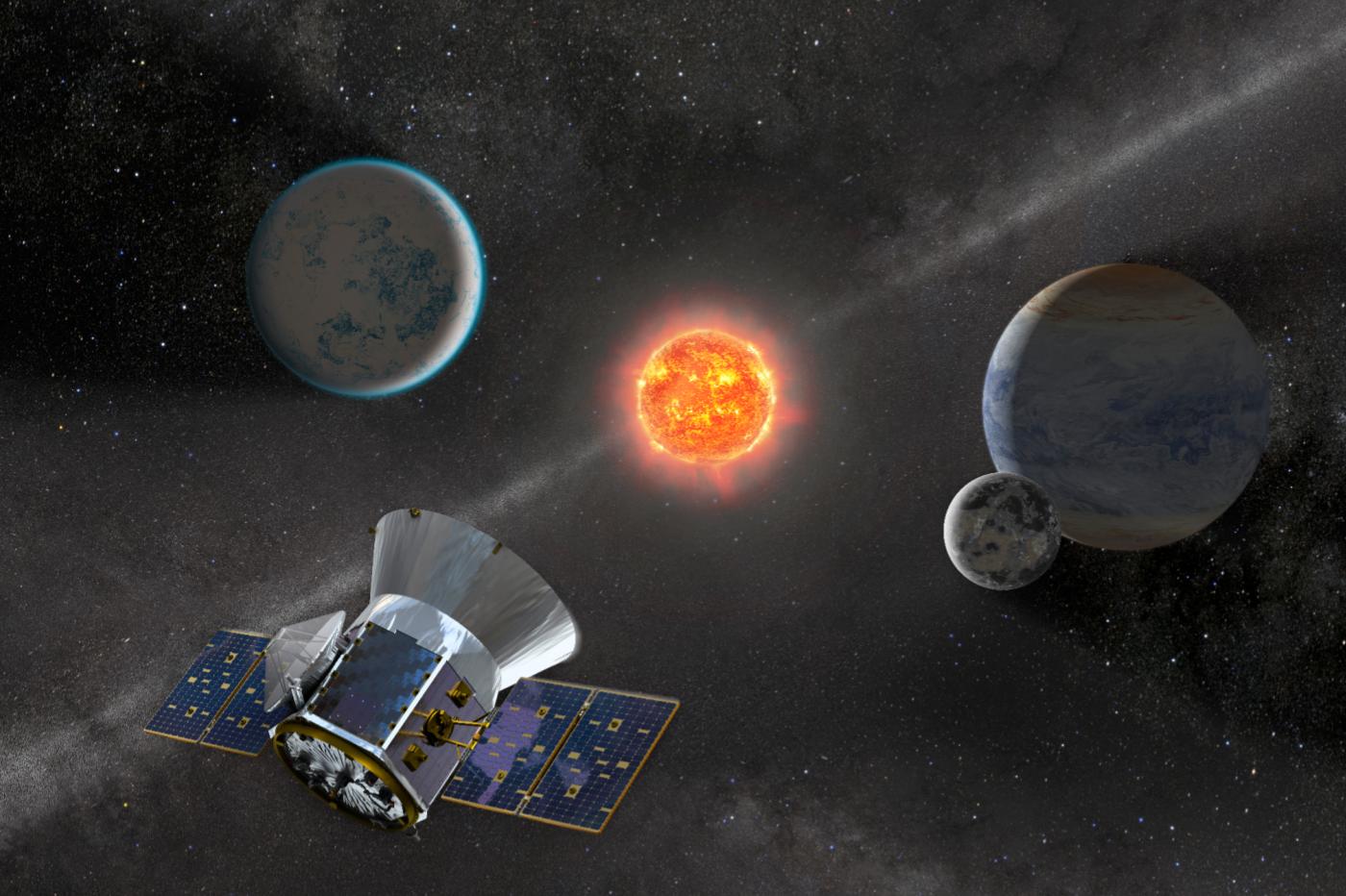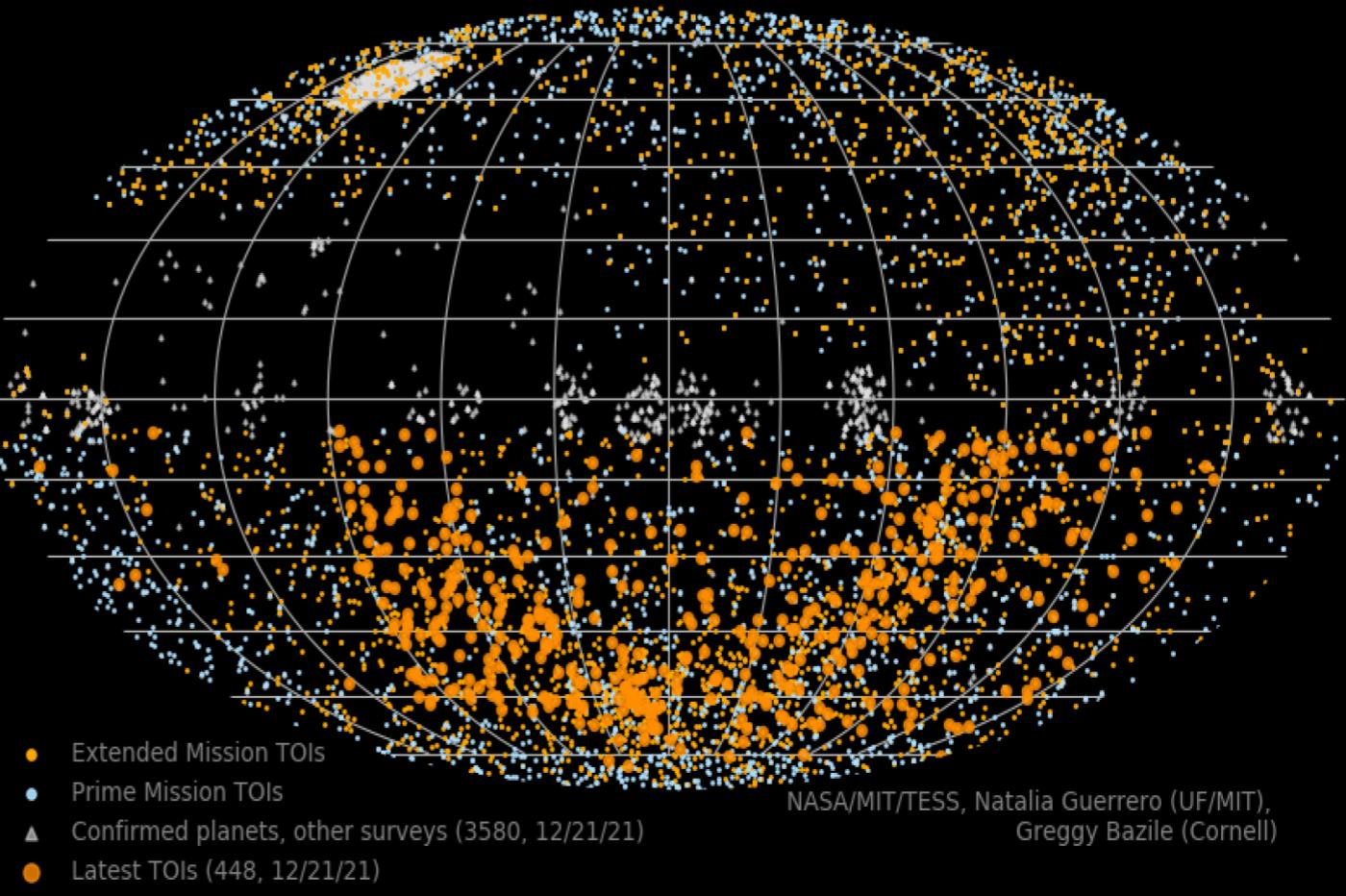
The TESS exoplanet hunter has been busy since the start of its mission four years ago, with more than 2,500 finds in 2021 alone.
NASA has a number of famous instruments in its technological arsenal. But in addition to superstars like Hubble or the newest James Webb Space Telescope, there’s also a whole cohort of lesser-known equipment doing titanic work away from the eyes of the general public. This is the case of the Transiting Exoplanet Survey Satellite (TESS); this discrete exoplanet-hunting satellite deserves some attention on its work. Indeed, in a statement spotted by Space.com, MIT has just announced that the machine has flushed out several thousand potential exoplanets in just four years.
TESS is a little bit the spiritual successor of the Kepler telescope, the illustrious planet hunter who retired in 2018. He left with a well-stocked hunting list; in just under ten years, this scientific juggernaut has identified a total of 2,662 exoplanets, documented 61 supernovae, and contributed to the writing of nearly 3,000 research papers.

A prolific prospector
The bar was therefore set very high, and the expectations necessarily consequent when Tess was launched in 2018, shortly before the retirement of its eldest. But the least we can say is that the new kid has risen to the occasion. Barely four years after its launch, it can already claim the discovery of more than 5,000 celestial bodies of interest, of which more than 2500 in 2021 alone. An impressive harvest that astronomers will now have to dissect meticulously.
Indeed, like Kepler, TESS is only a prospector; its role is to flush out these objects, not to study them in detail. He then hands over to NASA specialists, who can then direct the rest of their scientific arsenal to his findings in order to extract a whole lot of essential information from them. The agency can then determine whether or not it is a planet, and if so, whether it has interesting features, such as a position theoretically compatible with the presence of liquid water.

A gigantic catalog full of hidden treasures
It is painstaking work that is often very long and tedious to achieve. It is first necessary to wait before all the conditions are favorable to the observation of the object; a step that can take months or even years depending on his position. It remains to observe it well enough to be able to obtain usable data, which must then be interpreted with great caution. Put together, these elements easily explain why only 176 of these thousands of potential exoplanets have been confirmed since.
But TESS does not have to be ashamed of this score which may seem very meager; the most impressive results will likely arrive several years from now, when NASA has had more time to explore this gigantic catalog. And the researchers are hopeful of flushing out some wonders, knowing that the device has already offered them some exceptional discoveries.
In January 2020, for example, it spotted TOI-700 d, its first potentially habitable exoplanet of a size comparable to that of Earth. We can also mention TOI-178, a star surrounded by five fascinating planets that dance on perfectly synchronized orbits, or a trio of suspended exoplanets that will be devoured by a star at the end of its life.
And that’s probably just the beginning; TESS will continue to shower NASA with data just waiting to be explored in search of new astronomical treasures at least until 2025, the theoretical date of its retirement.



